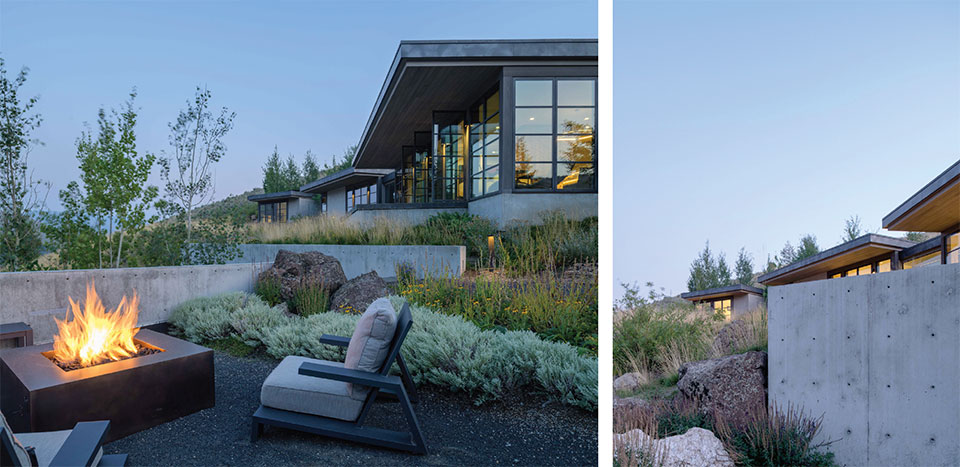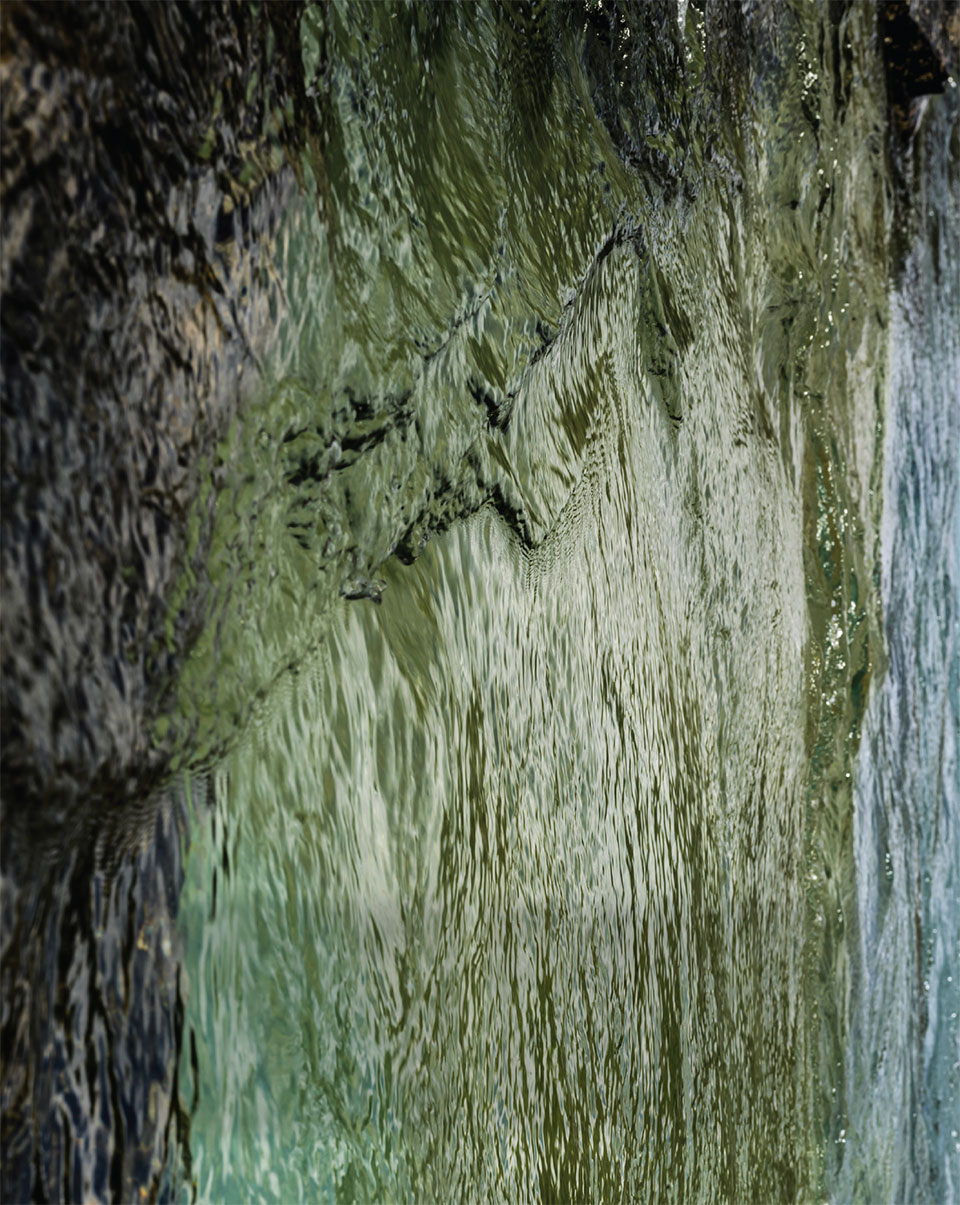EXPERTS WEIGH IN: BYLA
WATER SMART LANDSCAPING: BEST PRACTICES
by Cassidy Mantor
Last season we began a discussion of Water in the West, an objective look at how we manage the West’s most valuable natural resource. We studied water-tracking resources ranging from the U.S. Drought Monitor to more localized water-smart programs in our community and concluded that with minor modifications to our home systems and landscaping, we can have a great impact on the overall health of our environment. Now, with warmer months approaching and peak water use on the rise, we are delighted to bring you a second installment of the discussion, this time with local experts weighing in. Our hope is that after reading these pages, you will feel empowered to make one or two of the small changes our experts suggest, making your dream home that much more sustainable for generations to come.
WHJ is devoted to facilitating meaningful connections that strengthen our built landscape and enhance our greater community. As more people make the mountain lifestyle theirs, we believe it is our responsibility to educate as well as provide inspiration. As part of our ongoing look at water in the West, WHJ spoke with water use experts and compiled a list of the top five best practices for smart landscaping that will lead to sustainable living. We hope these points help get you started.
1.Start with a Survey
The survey helps develop an understanding of each site specifically in both the regional and micro-climate context. Is there bedrock? Is there surface water or groundwater? Does your neighbor have a spring that would only be discovered once you’ve dug into your foundation? Knowing the topography of soils helps build an understanding of the micro elements of the site.
2.Proper Site Planning & Landscape Design
Soil is diverse in northwestern Montana. It can range from sandy loam that drains water so that it disappears to clay that holds the water and creates issues for plant growth, to bedrock where we have to import soil. Landscaping strategies may consider surface water flow and how much water plant and root structures will use on the site. Some properties have surface water flow that can be integrated into the actual design either as a water feature or to retain water to help recharge a surface or subsurface soils on the site.
3.Minimizing Impact to Native Vegetation
Ethical landscape design attempts to minimize impact to native vegetation and – for places that have been disturbed – planting native materials that over time will not need irrigation beyond natural rainfall. The native understory of a forest might not look like the traditional green lawn we’ve been trained to appreciate, but the reality is that the root structure offers immense benefits to the environment, both the soil and the wildlife. If we remove it, it forces us to ask where will the rainfall go? Will water run downhill to your neighbor? Design often necessitates a layered approach and unless there is a specific intended use for flat turf such as a soccer field, putting green, or play area for the kids or grandkids, why not make it a native grass area? Beyond water, what you plant can reduce how much fertilizer and ongoing mowing and maintenance is needed.
4.Finish Surface Treatments
Mulch and planter beds hold in moisture. A shredded cedar mulch is a strong weed deterrent. Landscape design programs may involve a combination of soil, plants, and the water it takes to sustain the plants. Instead of spraying overhead water, which is inefficient and also leads to weeds, drip irrigation can direct water to each plant. Partnering with a landscape architect means you can easily create a healthy environment from both the vegetation standpoint and also how much maintenance is required to sustain it.
5.Plan Early
Proper planning combined with education on both budgetary and environmental considerations leads to the most successful designs. When you’re building a home, having a landscape architect on board early in the design process to work with the architect is important because they can share their knowledge to help make the best design for the site and that frequently saves money and time down the road. Design elements to consider are locations where a lush site full of native plants is appropriate, and where to develop focal points with high-impact perennial beds in main outdoor living spaces. It’s a matter of redesigning a space to get everything on your wish list and also applying best practices to ensure that the environment you’re building will thrive from a long-term practicality standpoint.
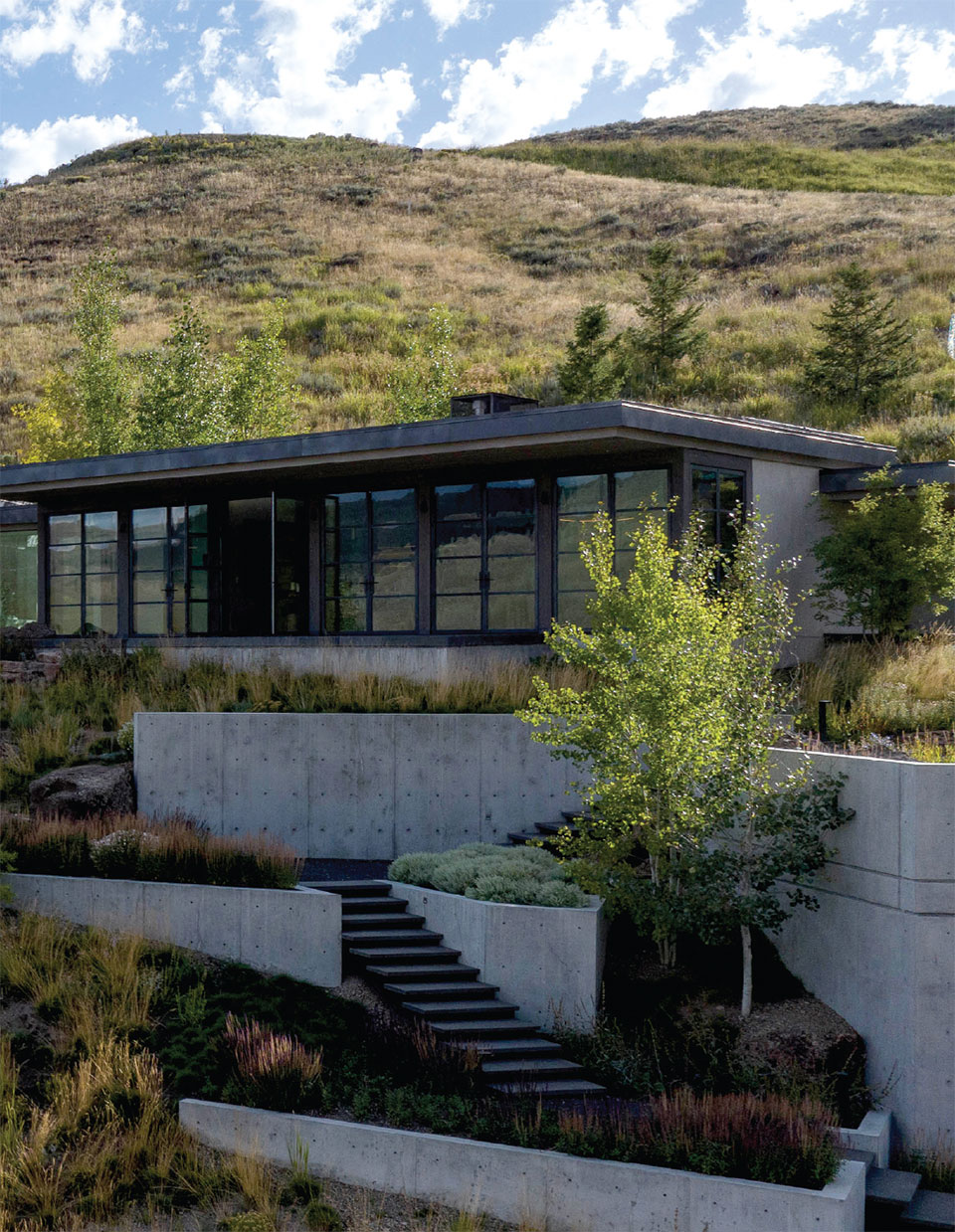
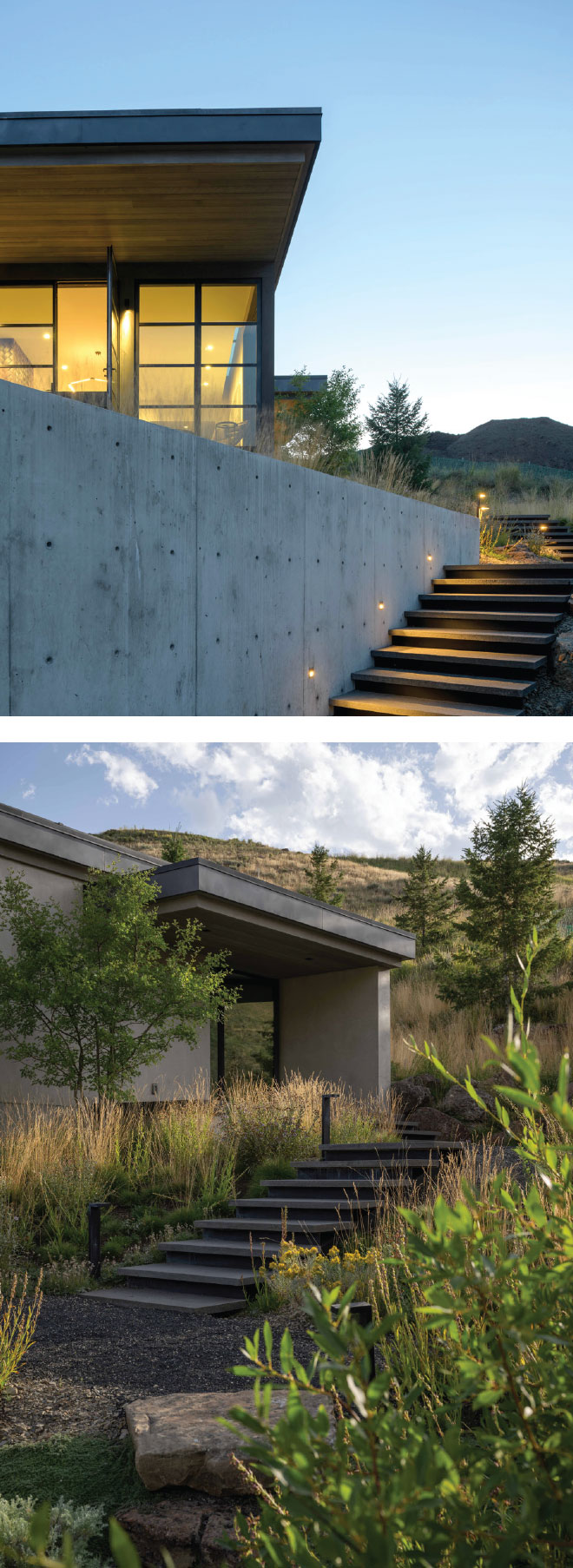
BYLA LANDSCAPE ARCHITECTS:
MAKING A HOUSE FIT THE HILLSIDE
BYLA Landscape Architects’
Philosophy hinges on the idea that the landscape and gardens should be outdoor sanctuaries filled with different emotions, cleverness, and excitement. With offices in Bozeman, Montana, and Ketchum, Idaho, they work collaboratively with architects and engineers to finesse the landscape elements with artistic compositions. BYLA’s hardscapes and softscapes center on principles of practical, aesthetic, horticultural, and environmental sustainability, and they aim to create a peaceful coexistence among the elements that is enchanting and thought-provoking. Their work is best illustrated by their recent work on a private residence built into an arid hillside.
The Project
BYLA was the landscape architect responsible for integrating a new house into an arid hillside in Ketchum, Idaho. The clients wanted to create outdoor living spaces that would allow them to move through the surrounding landscape and experience its seasonal beauty. BYLA’s main objective was to ensure the house felt cozy and snug within the land. The challenge was getting outdoor access to the front door, which was located more than 20 feet above the street. BYLA resolved this issue and designed a beautiful environment that put the home at ease within the terrain.
Artful Grade Transition
Complementing the lines of the home’s modern architecture, BYLA designed a clean and contemporary terraced entry that brought access to the front door. “We integrated a set of walls and transitional program spaces to set up the site and rebuild the landscape experience up to the house,” explains Brent Jacobsen, BYLA Studio Director, Senior Landscape Architect. “Our primary goal was to mitigate any construction impacts that could cause erosion or loss of the character of the hillside. We used boulders to retain grade and filled in the gaps with native planting to make a journey that is both relational to the surrounding vegetation as well as the steel, concrete, and basalt used on the home.” Overall, BYLA successfully integrated the house into the hillside landscape in a way that was both functional and beautiful.
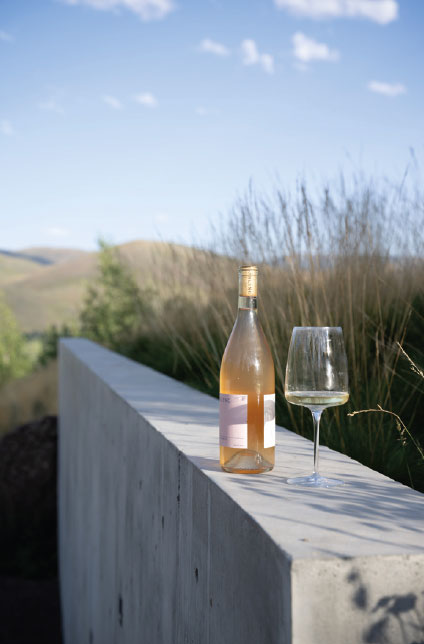
“We integrated a set of walls and transitional program spaces to set up the site and rebuild the landscape experience up to the house. Our primary goal was to mitigate any construction impacts that could cause erosion or loss of the character of the hillside. We used boulders to retain grade and filled in the gaps with native planting to make a journey that is both relational to the surrounding vegetation as well as the steel,
concrete, and basalt used on the home.”– Brent Jacobsen, Studio Director, Senior Landscape Architect, BYLA
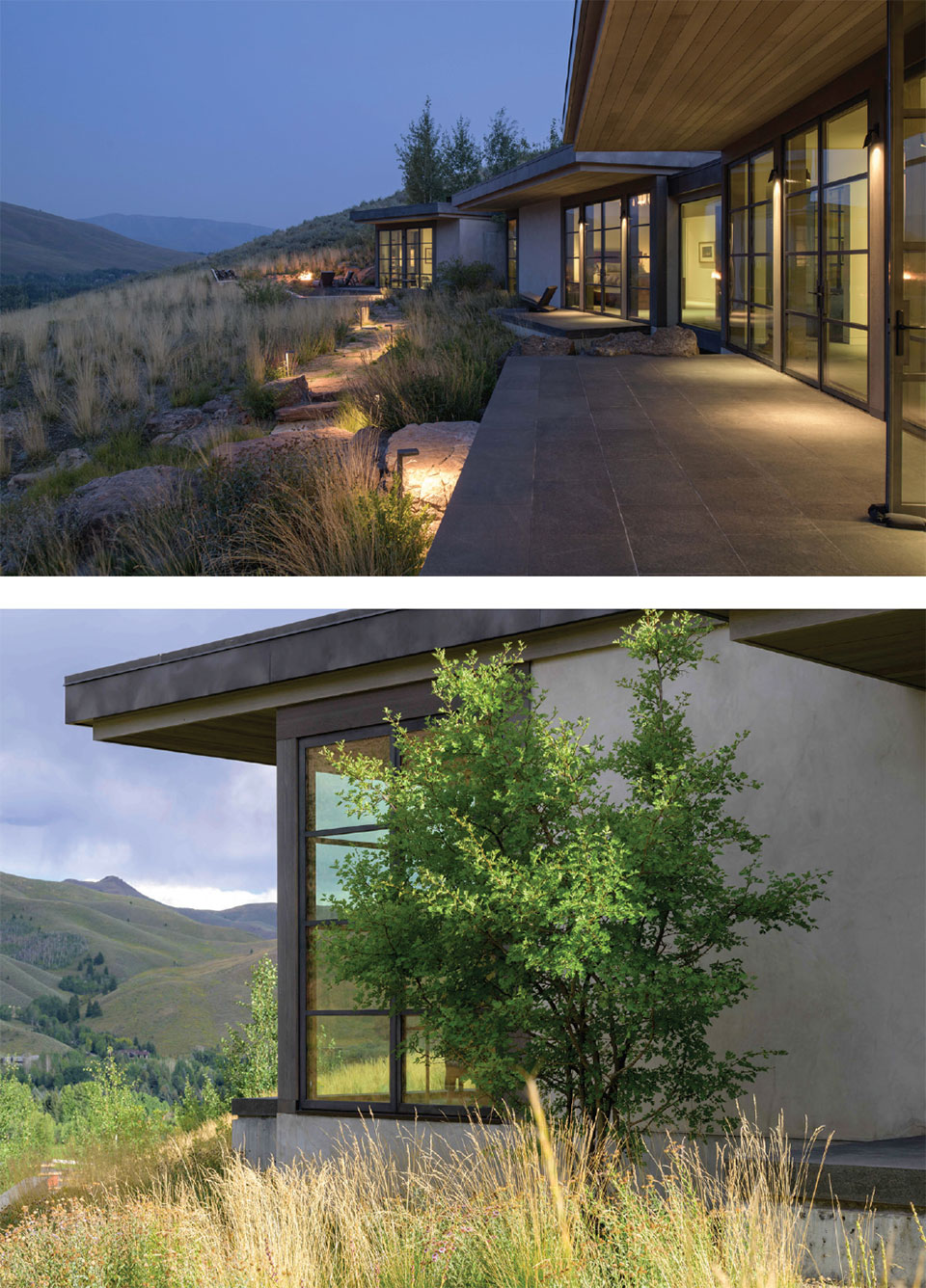
Integrating Native Landscape into a Modern Design
BYLA revegetated over 19,000 square feet of grassland on this property. “Key species we used involved Aspen and Douglas Fir, native shrubs such as Ribes and Rhus, and a palette of native grasses and forbs including Idaho Rescue, Sheep Fescue, Slender Wheatgrass, Bluebunch Wheatgrass, Columbine, Yarrow, Horsemint, Penstemon, Rabbitbrush and Leymus,” Jacobsen shares. While the project used a lot of natives, BYLA also integrated low-water traditional perennials such as Artemisia to enhance the garden. Their design strategy balanced creating a textural experience with the native palette and providing human-scale interest with the home’s modern architectural style.
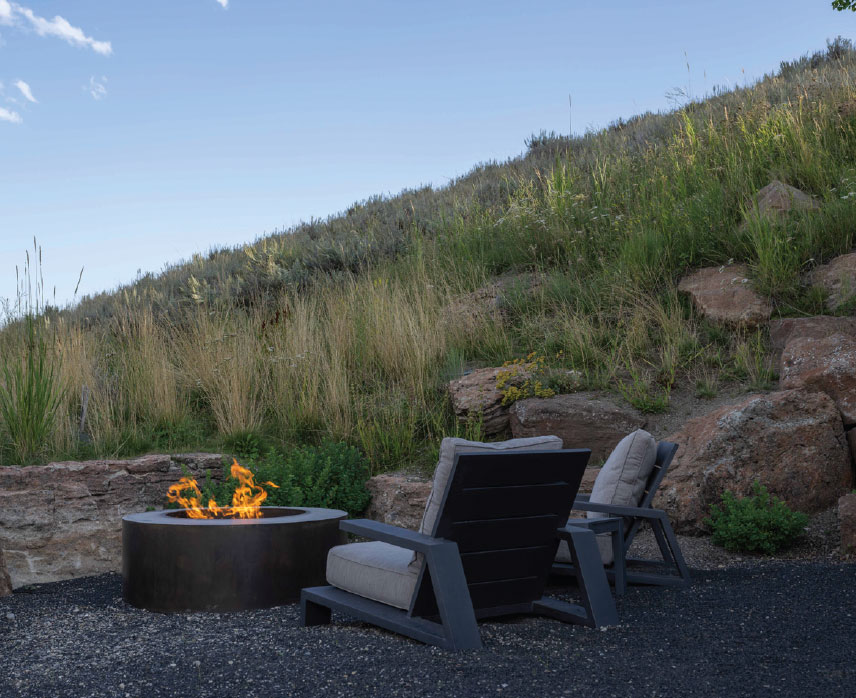
“Rather than considering water-smart choices as a limiting factor, we believe that using native plants and regionally-adapted drought-tolerant plants can help us create site-specific landscapes that improve a client’s connection to nature.”
– Brent Jacobsen, Studio Director, Senior Landscape Architect, BYLA
Water-Smart Choices Enhance Sense of Place
“Rather than considering water-smart choices as a limiting factor, we believe that using native plants and regionally-adapted drought-tolerant plants can help us create site-specific landscapes that improve a client’s connection to nature,” Jacobsen says. When ecologically adapted to work together and horticulturally sound, this blend can lead to great outcomes. “These choices also benefit long-term operations on the property and welcome wildlife,” he adds. BYLA approaches each project as unique and works to develop an understanding of their clients’ goals and aspirations. That inquiry helps the team determine how best to integrate water conservation approaches into the site experience, enhancing how each house will best be at home on its property and how each client will feel most at home in their distinct space.
